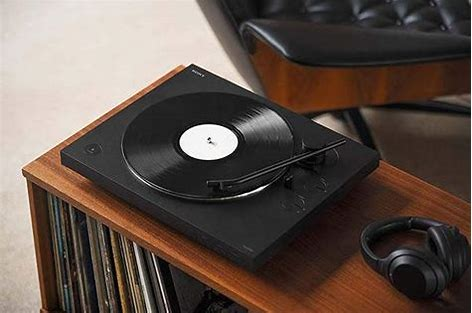In the age of computerized music and streaming services, turntables have made a shocking comeback. The warm, analog sound they deliver has captivated a new era of audiophiles, and the vinyl record advertisement is flourishing.
If you’re considering including a turntable to your sound setup, this article will guide you through the basic variables to consider when obtaining one.
Understanding Turntable Types
Turntables come in various types, each with its unique characteristics and benefits.
Manual Turntables: These require manual operation for playing records, offering a more hands-on involvement. They are frequently favored by audiophiles who appreciate the material nature of vinyl playback.
Automatic Turntables: These turntables mechanize the record-playing prepare, making them more helpful for casual listeners. They regularly include a tonearm that consequently returns to the rest after the record finishes playing.
Belt-Drive Turntables: Known for their smooth and calm operation, belt-drive turntables utilize a belt to exchange control from the engine to the platter. They are regularly considered to offer prevalent sound quality.
Direct-Drive Turntables: In direct-drive turntables, the engine is directly connected to the platter, giving prompt torque and exact control. They are popular for DJs and those who require speedy and exact record manipulation.
Key Components to Consider When Buying a Turntable
Sound Quality: The most basic factor when choosing a turntable is the sound quality it produces. See for turntables with high-quality components, such as a strong plinth, a well-balanced tonearm, and an exact cartridge.
Budget: Turntables can range in cost from a few hundred dollars to a few thousand. Decide your budget and research models that offer the best esteem inside your cost range.
Features: Consider the highlights that are imperative to you, such as programmed or manual operation, built-in phono preamp, and extra accessories like a clean cover or a turntable mat.
Brand Notoriety: Select a turntable from a reputable brand with a history of creating quality audio equipment. See for brands that are known for their craftsmanship and client support.
Popular Turntable Brands
Rega: Famous for their reasonable and high-quality turntables, Rega offers a wide range of models to suit distinctive budgets and preferences.
Pro-Ject: Pro-Ject is another prevalent brand known for its imaginative plans and amazing sound quality. They offer a variety of turntables, counting belt-drive and direct-drive models.
Audio-Technica: Audio-Technica is a well-respected brand that offers a wide range of turntables, from budget-friendly models to high-end audiophile options.
Denon: Denon is known for its premium sound components, counting turntables. Their models are frequently characterized by their smooth design and extraordinary sound quality.
Components of a Turntable
A turntable comprises of a few key components:
Plinth: The base of the turntable, which gives stability and isolates the turntable from vibrations.
Platter: The turning circle that holds the record. Platters are ordinarily made of metal or acrylic.
Motor: The engine drives the platter at a consistent speed, usually 33.3 RPM or 45 RPM.
Tonearm: The arm that holds the cartridge and moves over the record. Tonearms are ordinarily made of aluminum or carbon fiber.
Cartridge: The component that converts the vibrations from the record grooves into electrical signals. Cartridges come in different sorts, such as moving coil (MC) and moving magnet (MM).
Sound Quality and Cartridge Selection
The quality of a turntable’s sound is generally decided by the cartridge. MC cartridges are generally considered to offer prevalent sound quality due to their higher affectability and lower twisting.
However, they moreover require a specialized phono preamp to increase their output. MM cartridges are more reasonable and easier to use, but they may not offer the same level of detail and clarity as MC cartridges.
Phono Preamp
A phono preamp is fundamental for increasing the low-level signals from a turntable. It too corrects for the inherent equalization characteristics of vinyl records. Most modern turntables have built-in phono preamps, but a few audiophiles prefer to use outside phono preamps for better sound quality and flexibility.
Turntable Maintenance
Proper maintenance is pivotal for guaranteeing the longevity and execution of a turntable. Frequently clean the records and stylus to avoid dust and soil from collecting. Avoid setting the turntable in regions with excessive vibration or temperature fluctuations.
Conclusion
Choosing the right turntable can be a fulfilling involvement, permitting you to rediscover the enchantment of vinyl records. By carefully considering the components examined in this article, you can discover a turntable that meets your needs and gives years of satisfaction.
Whether you’re a prepared audiophile or just beginning your vinyl journey, a turntable is a timeless venture that will bring joy and motivation to your listening experience.
FAQs
What is a phono preamp, and do I need one?
A phono preamp is a specialized enhancer that boosts the low-level signals from a turntable. Most advanced turntables have built-in phono preamps, but a few audiophiles prefer to use outside ones.
What variables affect the sound quality of a turntable?
The quality of the turntable’s components, counting the plinth, platter, tonearm, and cartridge, altogether affect its sound quality.
What is the distinction between moving coil (MC) and moving magnet (MM) cartridges?
MC cartridges are generally considered to offer prevalent sound quality but require a specialized phono preamp. MM cartridges are more reasonable and simpler to use.
What is a stylus, and how regularly should it be replaced?
The stylus is the part of the cartridge that makes contact with the record grooves. It should be replaced routinely, regularly each 100-200 hours of use.
What is a turntable tangle, and does it improve sound quality?
A turntable mat can help separate vibrations and improve sound quality. A few mats are made of materials like plug or felt, whereas others are outlined to reduce static.
How should I set up my turntable?
Follow the manufacturer’s instructions carefully when setting up your turntable. Guarantee that it is put on a steady surface and that the tonearm is properly adjusted.
To read more, click here
